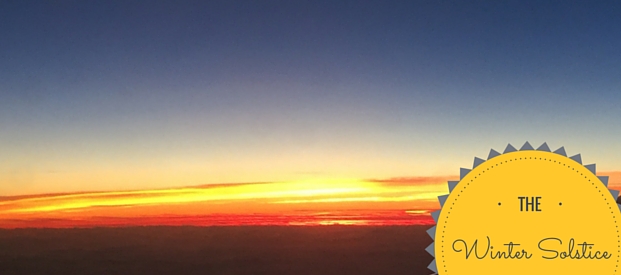Winter Solstice
Finallly our earth will start tilting towards the sun from 21 December. Winter Solstice, Yule, Dongzhi, Soyal, Yalda, Chaomos … across Earth’s northern hemisphere, different nationalities at different festivals all celebrate the same event: the shortest day of the year and the turning point when daylight hours start to get longer.
2,500 years of celebrations
To our early ancestors, the winter solstice was of great importance, signifying the beginning of the return of the sun, and darkness turning into light. Nowadays we still mark the solstice on 21 or 22 December with many different traditions. Some of the festivities go back 2,500 years or more. China’s Dongzhi celebrations can be traced right back to the Han Dynasty, and are based on the yin and yang philosophy of balance and harmony in the cosmos. Today this is a time for family gatherings, singing, and visits to temples, with people rejoicing in the belief that after the festival the longer daylight hours will increase positive energy. In Ancient Rome, the Saturnalia Festival began more than 2,000 years ago as a farmers’ festival, growing over time to involve banquets, gifts, gambling, revelry and sacrifices. Usual behaviour was overturned, slaves were served by their masters, and seriousness was not allowed. The Saturnalia gradually degenerated into a spree of crime and debauchery and finally disappeared, although some of its kinder customs are still found in Christmas celebrations today.
Other countries continue to mark the solstice in different ways. In Guatamala, tribesmen perform the dangerous ‘polo voladore’ or ‘flying pole dance’ in honour of the sun god. At the top of a tall pole, one man plays the flute and dances, while others swing from ropes, tied by the feet and suspended from the pole. In Pakistan, close to the Afghan border, the Kalash tribe’s Chaomos festival lasts seven days with ritual baths for purification, as well as singing, chanting, dancing and bonfires.
In Mexico, the festive procession from Cusco to the ancient amphitheatre nearby is based on the ancient Inca ceremonies, banned in the 16th century and revived in the 1950s, in honour of the sun god. Soyal, the ceremony of the Native American tribes, the Zuni and the Hopi, brings the sun back from its winter slumber and marks the beginning of another Wheel of the Year. Yalda is the ancient Persian winter solstice festival for the birthday of the sun god Mithra and the victory of light over dark: today Iranians decorate their houses with candles and gather for family feasts and dancing.
Winter solstice in the UK
At Stonehenge, pagans, druids and others meet to celebrate the winter solstice or Yule. Wearing ceremonial robes or exotic costumes, they come to take part in ceremonies, music and dancing, and to see the light of the rising sun perfectly aligned between the standing stones. In Ireland, hundreds gather at the Neolithic tomb of Newgrange, built directly in line with the sunrise of the winter solstice. Just twenty lucky people, chosen by lottery, will go inside the chamber of the tomb for the chance to see the shaft of dawn sunlight come through the roof opening. In 2022 the event will be in person, having been live-streamed for the past 2 years due to maintaining social distancing.
On Montol Eve (21st December) in Penzance, in a revival of historic Cornish midwinter revelry, people bring hand-made lanterns and dress in spooky disguises or in Venetian Masquerade costume, to join the ‘Rivers of Fire’ procession. Bonfires, dancing, music and the ‘Lighting of the Mock’ are all part of the tradition.
A new tradition
Alongside so much history, one relatively new community event stands out. At Brighton’s Burning the Clocks, which began in 1994, local people process through the city’s streets, carrying large lanterns made of paper and wicker and decorated with clocks. These lanterns are ceremonially burned in a bonfire on the beach and there’s a dazzling fire show, live music and fireworks to round off the evening.
For people across the northern hemisphere, in a tradition stretching from China’s Han Dynasty to the citizens of Brighton today, the winter solstice is still a time for celebrating the longer hours of daylight ahead.










